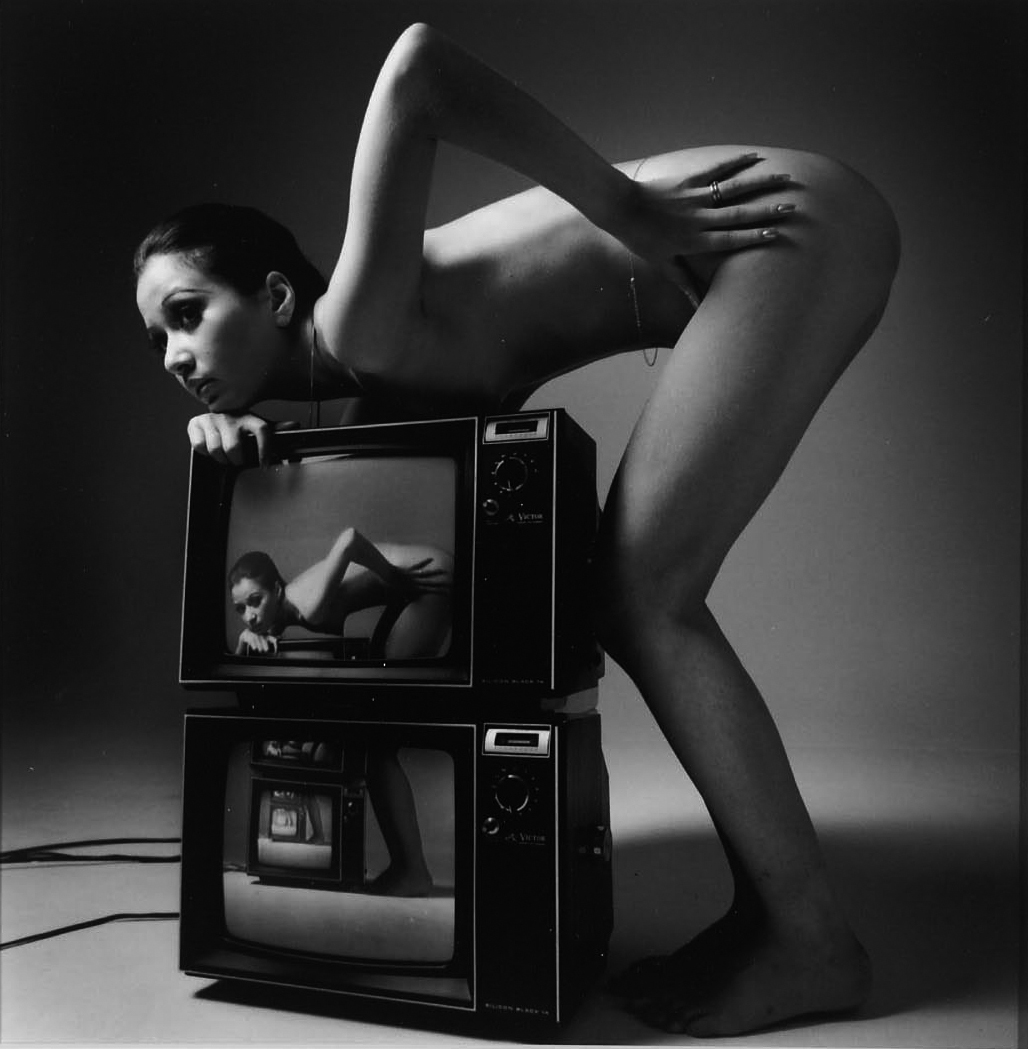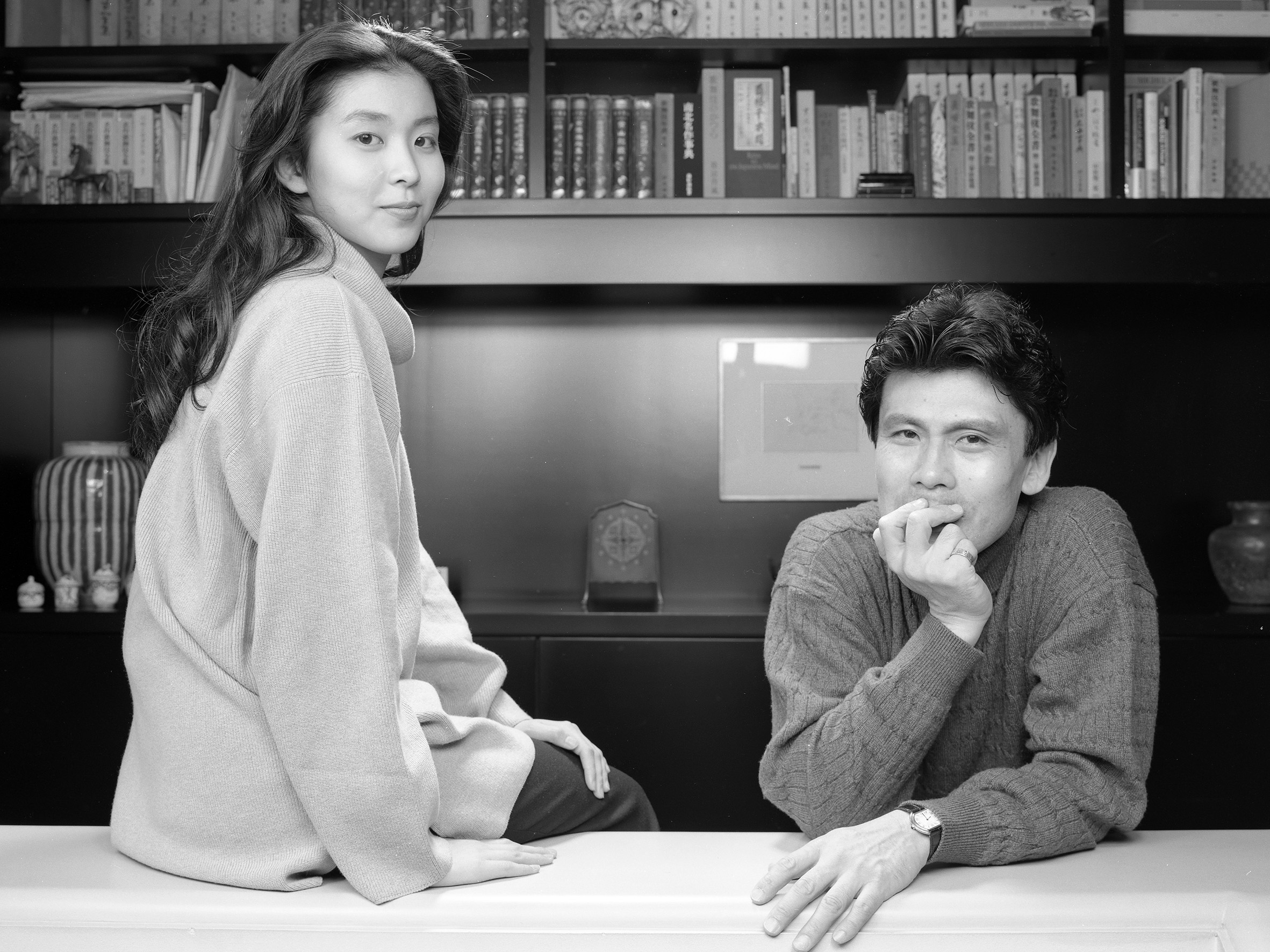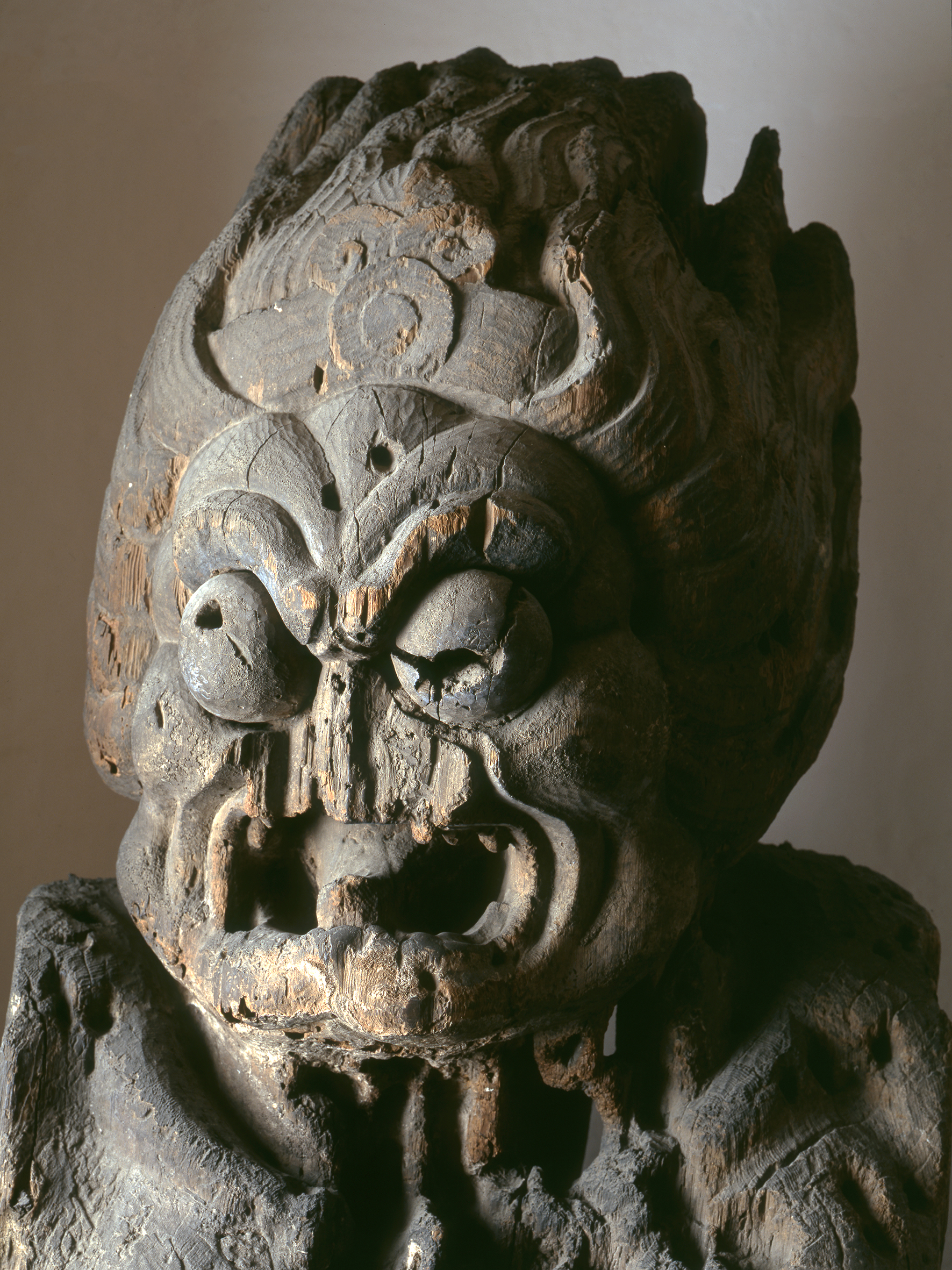
「イブたち」 1966 年

「親と子の情景」 1988〜1990 年

「夜叉神立像・阿形」1998 年
展覧会概要
写大ギャラリーでは、東京工芸大学創立100 周年を記念して、本学の卒業生でもある写真家・立木義浩写真展を開催いたします。
立木義浩は1965 年に『カメラ毎日』の巻頭56 ページにわたって掲載された「舌出し天使」で写真家として華々しくデビューします。1969 年にフリーランスとなり、ヌードを含む女性を中心にした多くの作品を発表する一方、広告・雑誌・出版など幅広い分野でさまざまな写真を撮影し、現在まで精力的に制作を続けています。
写真家としての立木の特徴はジャンルの幅の広さでしょう。その姿はあたかも特定されることを拒否するかのようにさえ映ります。そして、なによりつねに時代に敏感であることです。時々の流行、風俗、風潮、社会状況といったものに反応しながら制作を続けています。だからでしょうか、あたかも時代とともに走り続けている、という印象を抱かせもします。本人の言葉を借りれば「雑居性」いう言葉に集約されるのかもしれません。あるいは「自分の撮るものが、『作品』だと考えたことがない。後世に残そうと、思ったこともない。好きなものを、好きなように撮る。自分で納得がいくように撮る」(『東寺』集英社、1998 年)という発言の通り、つねに好奇心の向くままに写真と向き合ってきた姿勢に、立木の写真家としてのスタンスと意思の一端をみることができます。
60 年近いキャリアの中で撮られた作品は膨大です。その中から今回の展覧会では、ポートレイトに焦点を当てるかたちで作品を選出しました。代表作である「舌出し天使」はもとより、それ以前、20 歳(1957 年)で雑誌『アサヒカメラ』に掲載された幻のポートレイト、40 代の代表作であるドキュメンタリー『MY AMERICA』、東寺の国宝を含む仏像、東日本大震災の被災地で撮られた老人たちの肖像、さらには若い学生たちをモデルに近年撮影された作品、そして写真館に生まれた立木の原点を感じさせる親子の肖像などから構成されています。有名、無名、聖、俗、新、旧が混在する今回の展示は、独自の作家性を確立し、いまなお進化し続ける写真家・立木義浩を改めて展観する試みでもあります。
(企画構成 小林紀晴)
立木 義浩(たつき よしひろ, 1937年―)
徳島県に生まれる。生家は明治より続く写真館を営む。1958年東京写真短期大学(現・東京工芸大学)写真技術科卒業。その後、広告会社アドセンター設立時にカメラマンとして参加。1965年に『カメラ毎日』の巻頭56ページにわたって掲載された「舌出し天使」でデビュー。1969年フリーランスとなり、女性を中心とした多くの作品を発表する一方、広告・雑誌・出版など幅広い分野で活躍する。1965年に第9回日本写真批評家協会新人賞、1987年に第18回講談社出版文化賞写真部門を受賞。1979年から現在まで東京工芸大学のフォックス・タルボット賞の審査員(2022年度より審査委員長)も務めている。
基本情報
| 会期 |
2023年9月8日(金) 〜 2023年11月1日(水) |
|---|---|
| 開館時間 |
10:00〜19:00 |
| 休館日 |
木曜日、日曜日、祝日 *ただし、10月8日(日)、10月9日(月・祝)は開館 |
| 入場料 |
無料 |
| 会場 |
東京工芸大学 写大ギャラリー 〒164-8678 東京都中野区本町2-4-7 5号館(芸術情報館)2F TEL 03-3372-1321 (代) 地下鉄丸ノ内線/大江戸線 中野坂上駅下車 1番出口・徒歩7分 |
| 展示作品 |
カラー・モノクロ写真作品 80点 |
| トークイベント | 9月30日(土)13:30〜 立木義浩×池谷修一(写真編集者) |
| 主催 |
東京工芸大学 芸術学部 |
| 企画・構成 |
小林 紀晴 写大ギャラリー運営委員長 |
トークイベント
9月30日(土)13:30〜
立木義浩×池谷修一(写真編集者)
入場無料、要予約(03-5371-2694/shadai-gallery@t-kougei.ac.jp)
Portraits/Time: Tatsuki Yoshihiro Photography Exhibition
Exhibition Outline
In commemoration of the 100th anniversary of the founding of Tokyo Polytechnic University, the Shadai Gallery will host an exhibition of the work of photographer and University graduate Tatsuki Yoshihiro.
Tatsuki Yoshihiro made a stunning debut as a photographer with A Fallen Angel, a 56-page cover feature in Camera Mainichi in 1965. He went freelance in 1969. While publishing prolifically, especially nudes and other photographs of women, he produced images for the wide-ranging fields of advertising, magazines, and books. He continues to vigorously produce work to this day.
The most characteristic feature of Tatsuki as a photographer is the wide range of genres he works in. It almost seems as if he deliberately refuses to be pigeonholed. Above all, he is sensitive to the times. His work is responsive to shifting fashions, style, trends, and social conditions. Perhaps this is why he appears to be running with the times. To borrow a phrase the photographer uses, this might be captured by the “quality of shared residence.” Or, as he has written, “I have never considered the things I photograph to be ‘works.’ I have never thought of leaving them to posterity. I photograph things I like, the way I like. I shoot to my own satisfaction.” (Tō-ji [Shūeisha, 1998]) In this posture of always following his curiosity in his engagement with photography, we can detect something of Tatsuki’s stance and determination as a photographer.
In his nearly 60-year career, Tatsuki has produced voluminous work. From this oeuvre, we have focused on portraits in our selection of photographs to exhibit. These include work from his seminal series A Fallen Angel, as well as a rare early portrait that he published in Asahi Camera in 1957, when he was 20; the documentary series from his 40s, My America; Buddhist statues, including a national treasure at Tō-ji temple; and portraits of elder residents in the disaster zone of the Great East Japan Earthquake. There are also recent portraits with young students as models, and family portraits that hearken back to Tatsuki’s origins at his family’s photography studio. With its mixture of famous and anonymous, holy and profane, new and old, this exhibition offers an opportunity to take a new look at Tatsuki Yoshihiro, a photographer who established a unique artistry that continues to evolve today.
Kobayashi Kisei, exhibition organizer
Tatsuki Yoshihiro (1937–)
Born in Tokushima Prefecture. His family operated a photography studio with roots in the Meiji era. Graduated in 1958 from the Department of Photographic Art at the Tokyo College of Photography (now Tokyo Polytechnic University). When the advertising company Ad Center was established the following year, he joined as a cameraman. In 1965 he published the 56-page photographic feature A Fallen Angel in Camera Mainichi. After he went freelance in 1969, he published prolifically, especially photographs of women, while remaining active across a broad range of fields, including advertising, magazines, and book publishing. In 1965, he was given the new artist award by the Japan Photo Critics Association, and in 1987, he was awarded the Kodansha Publishing Culture Prize for photography. Since 1979, he has served as a juror for the University’s Fox Talbot Award (since 2022, he has been chair of the jury).
Tatsuki Yoshihiro (1937–)
Born in Tokushima Prefecture. His family operated a photography studio with roots in the Meiji era. Graduated in 1958 from the Department of Photographic Art at the Tokyo College of Photography (now Tokyo Polytechnic University). When the advertising company Ad Center was established the following year, he joined as a cameraman. In 1965 he published the 56-page photographic feature A Fallen Angel in Camera Mainichi. After he went freelance in 1969, he published prolifically, especially photographs of women, while remaining active across a broad range of fields, including advertising, magazines, and book publishing. In 1965, he was given the new artist award by the Japan Photo Critics Association, and in 1987, he was awarded the Kodansha Publishing Culture Prize for photography. Since 1979, he has served as a juror for the University’s Fox Talbot Award (since 2022, he has been chair of the jury).
